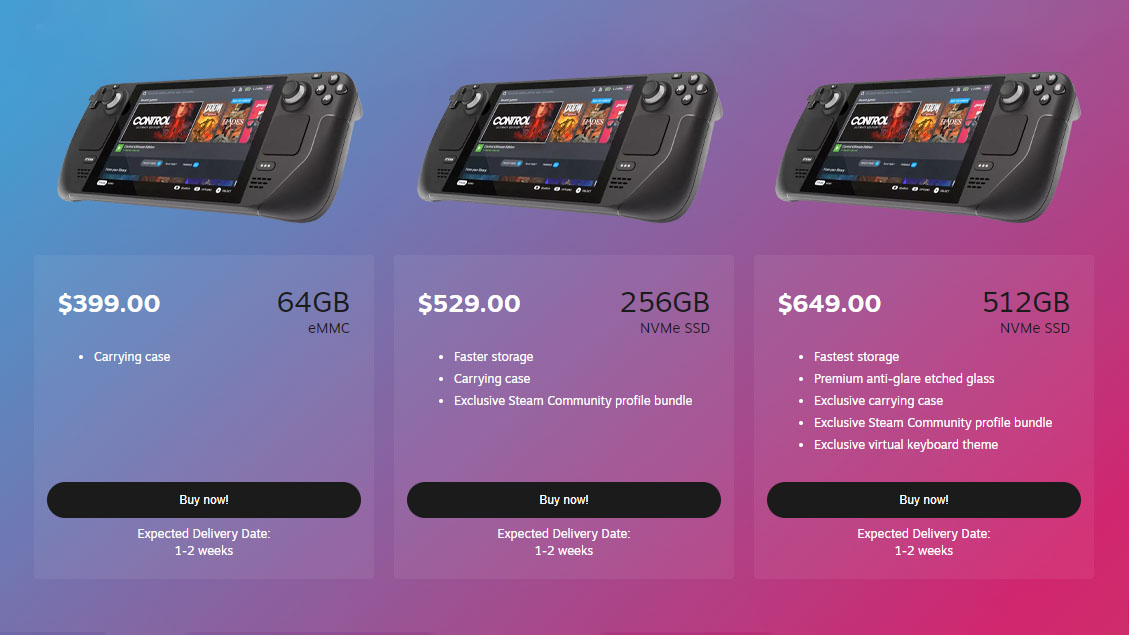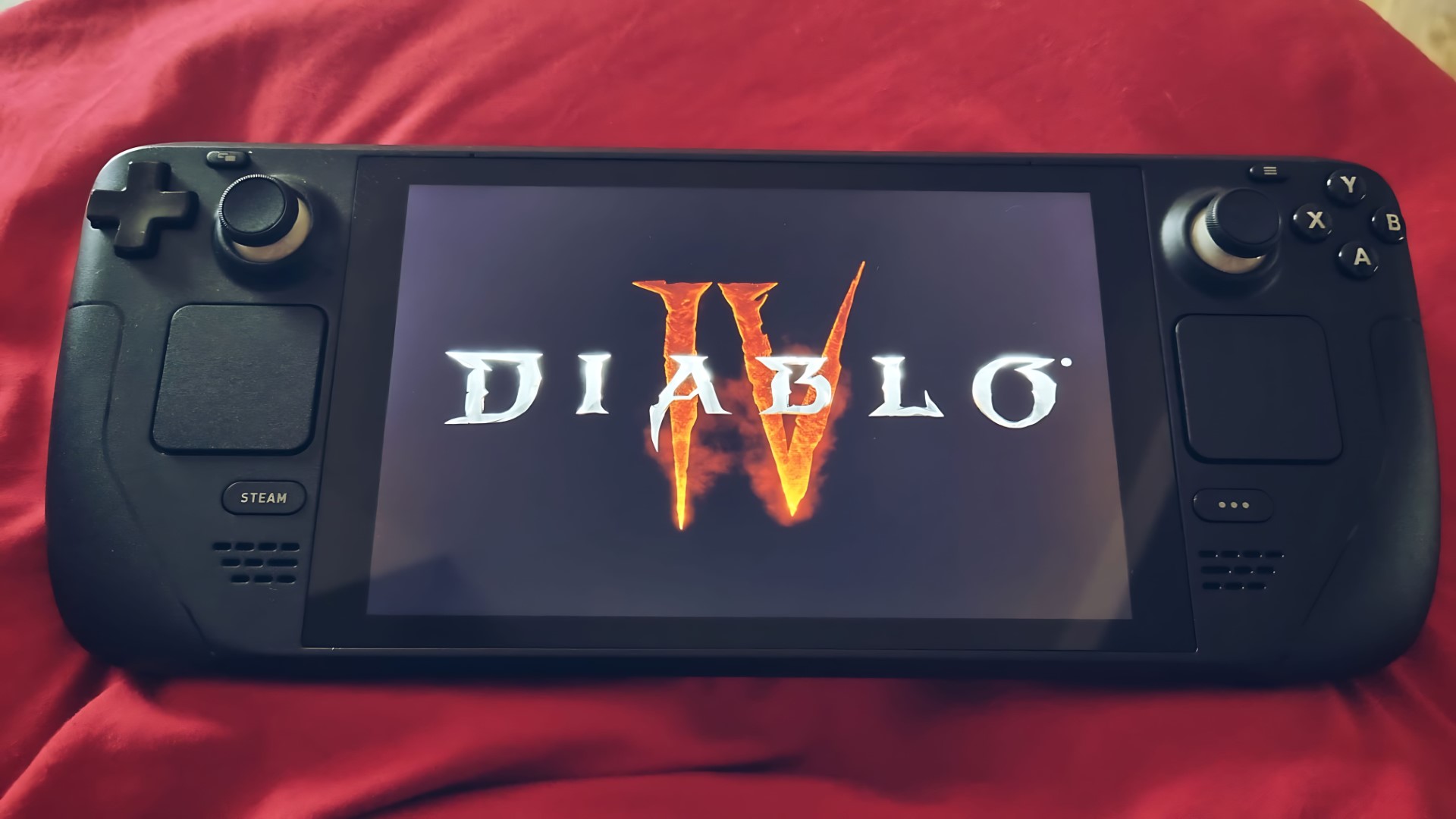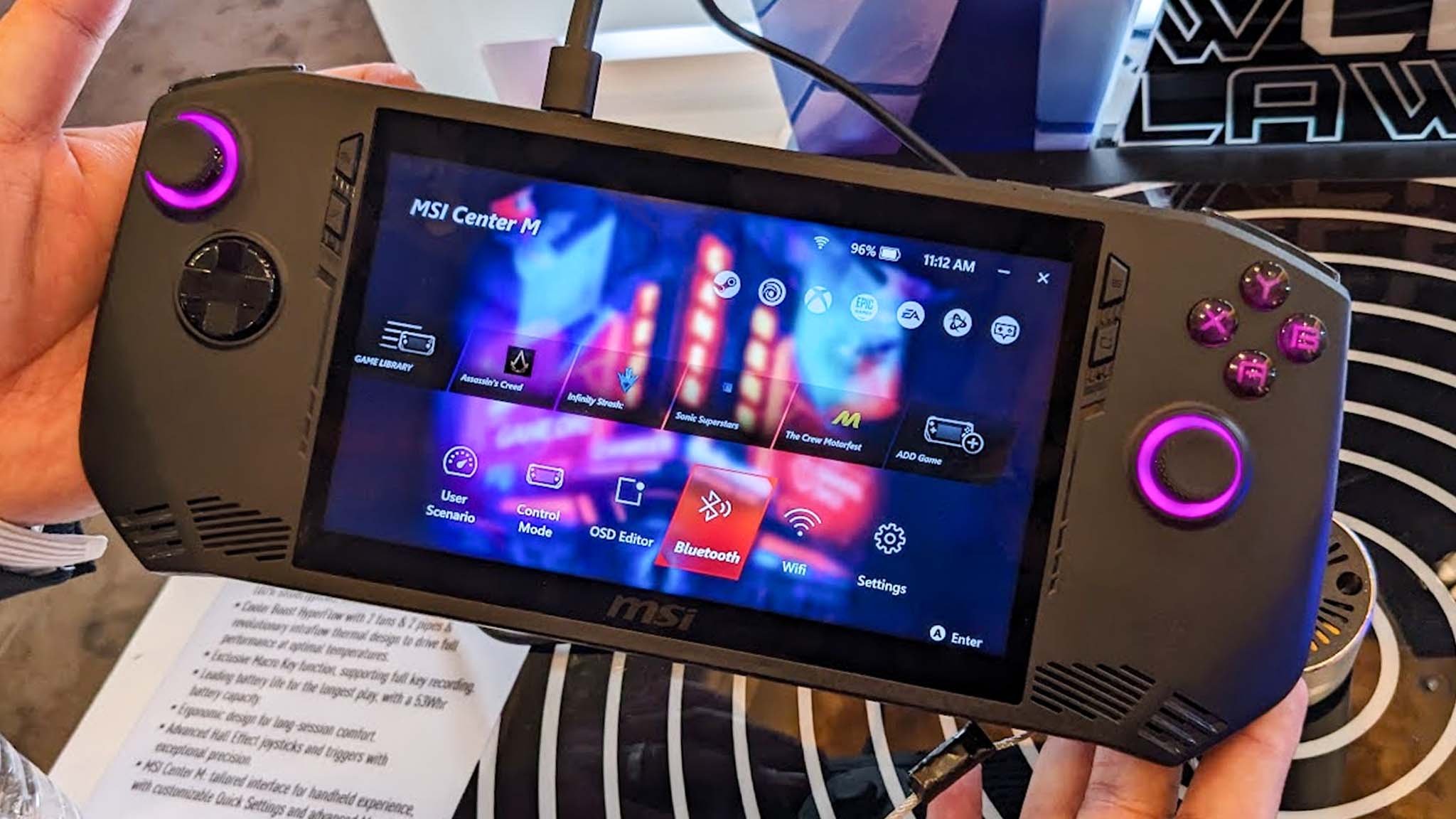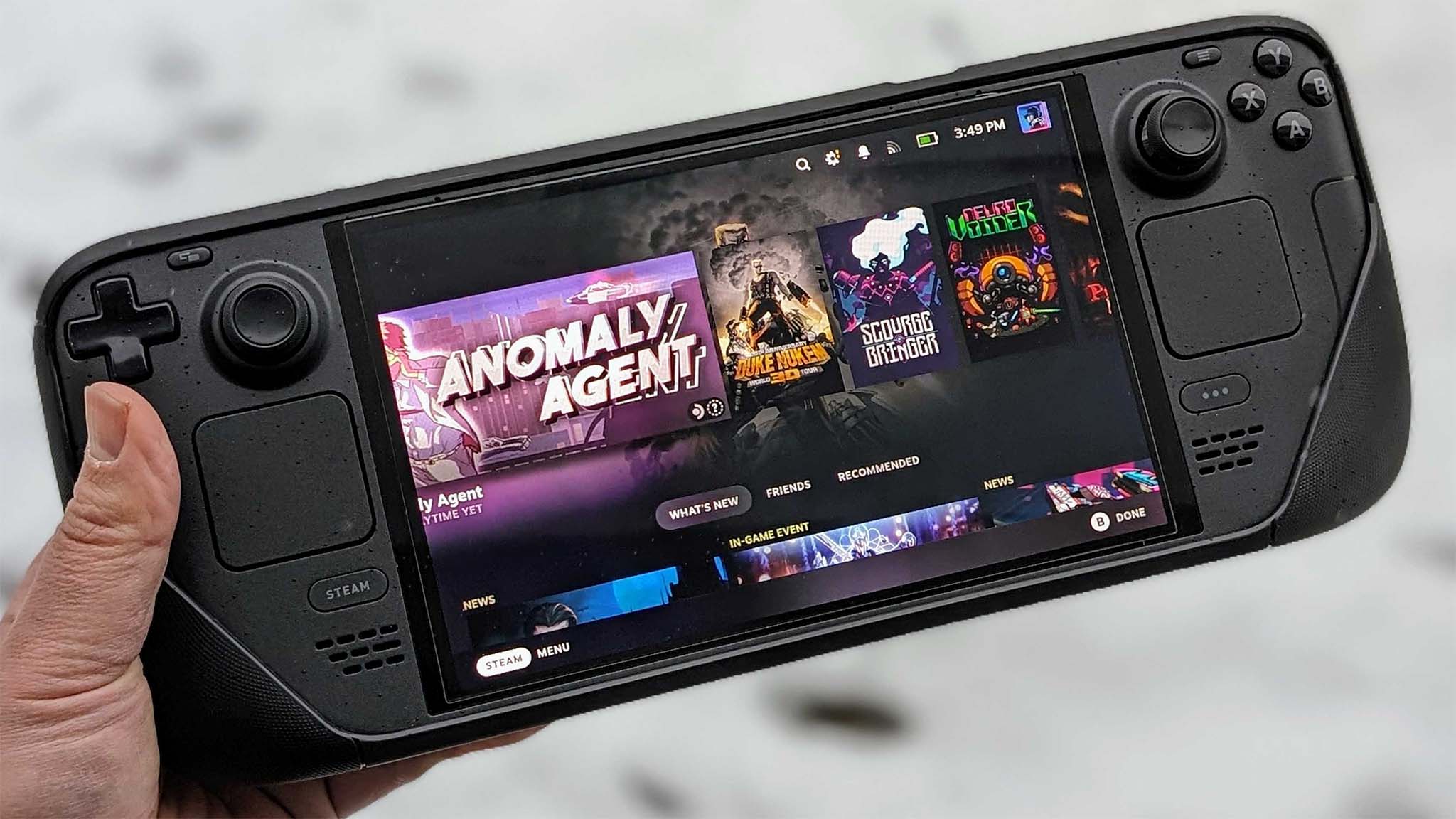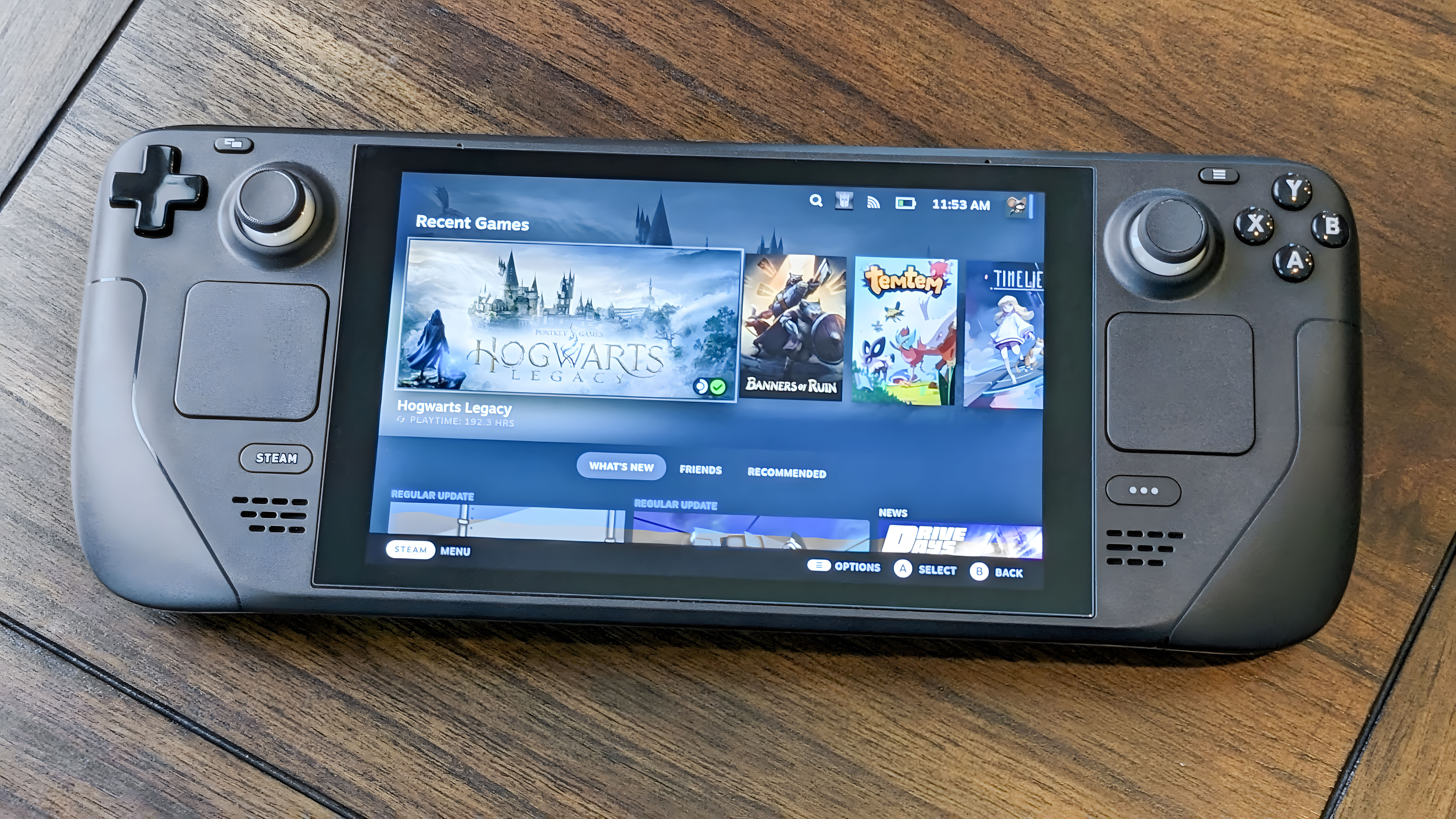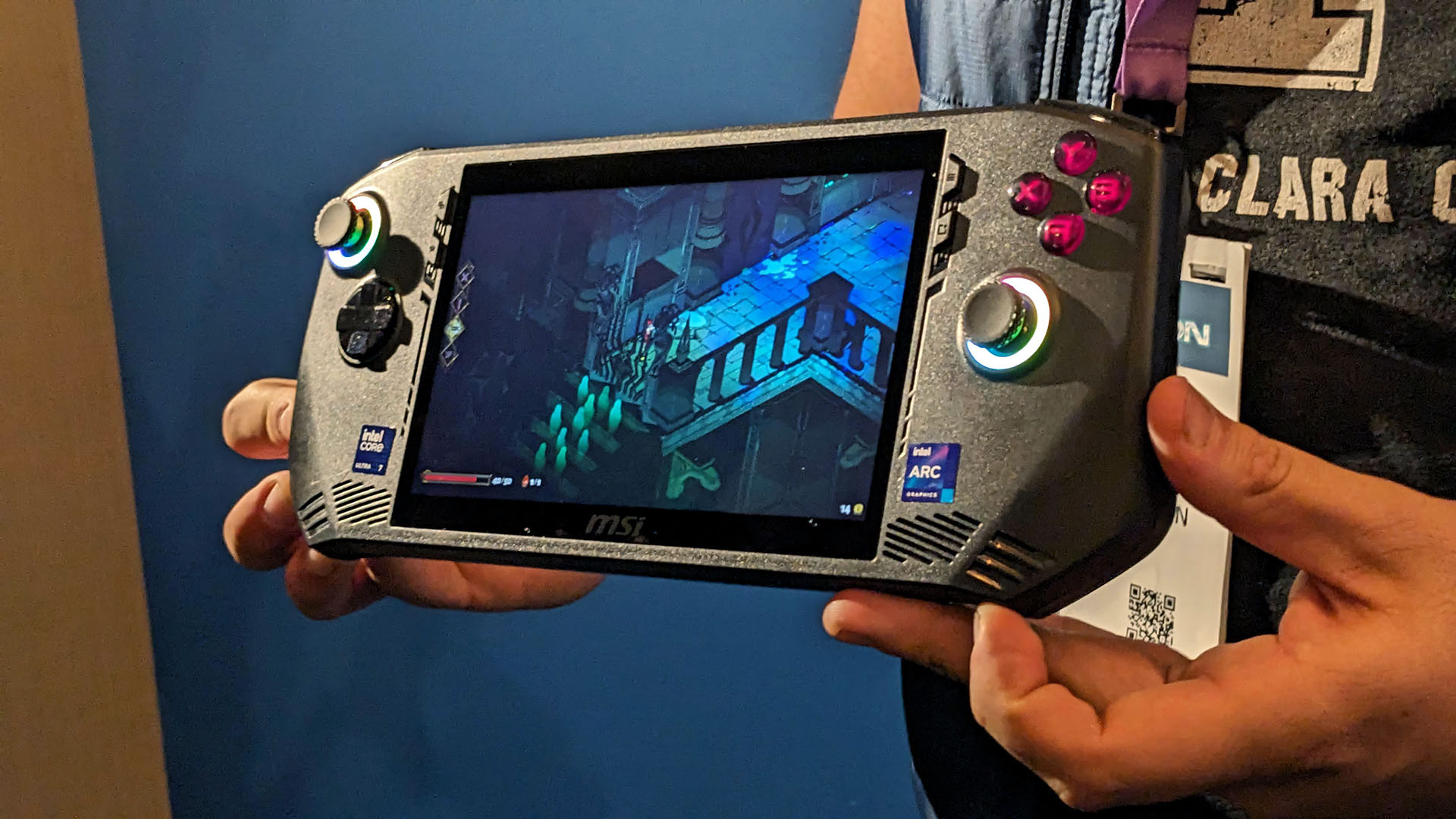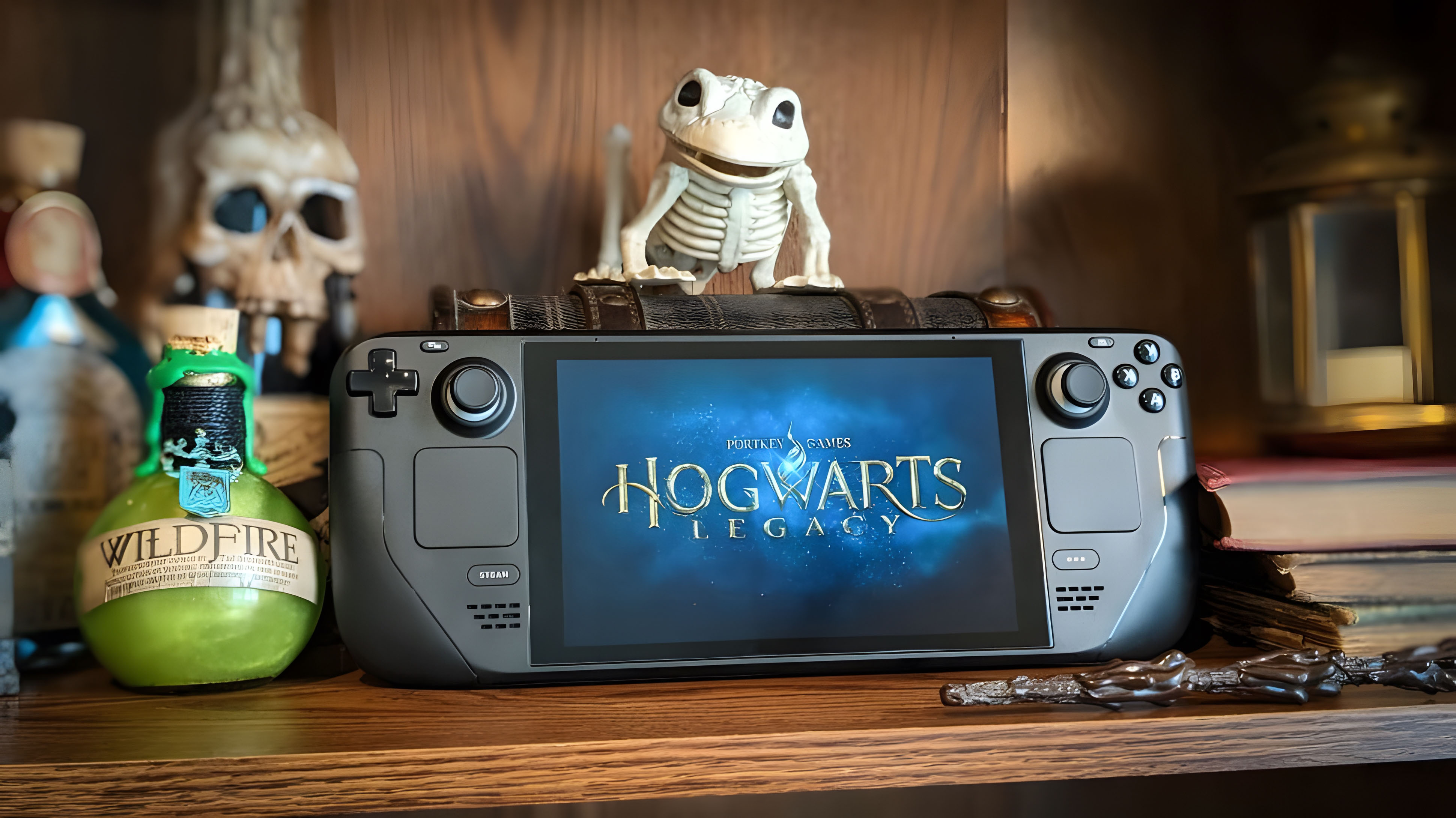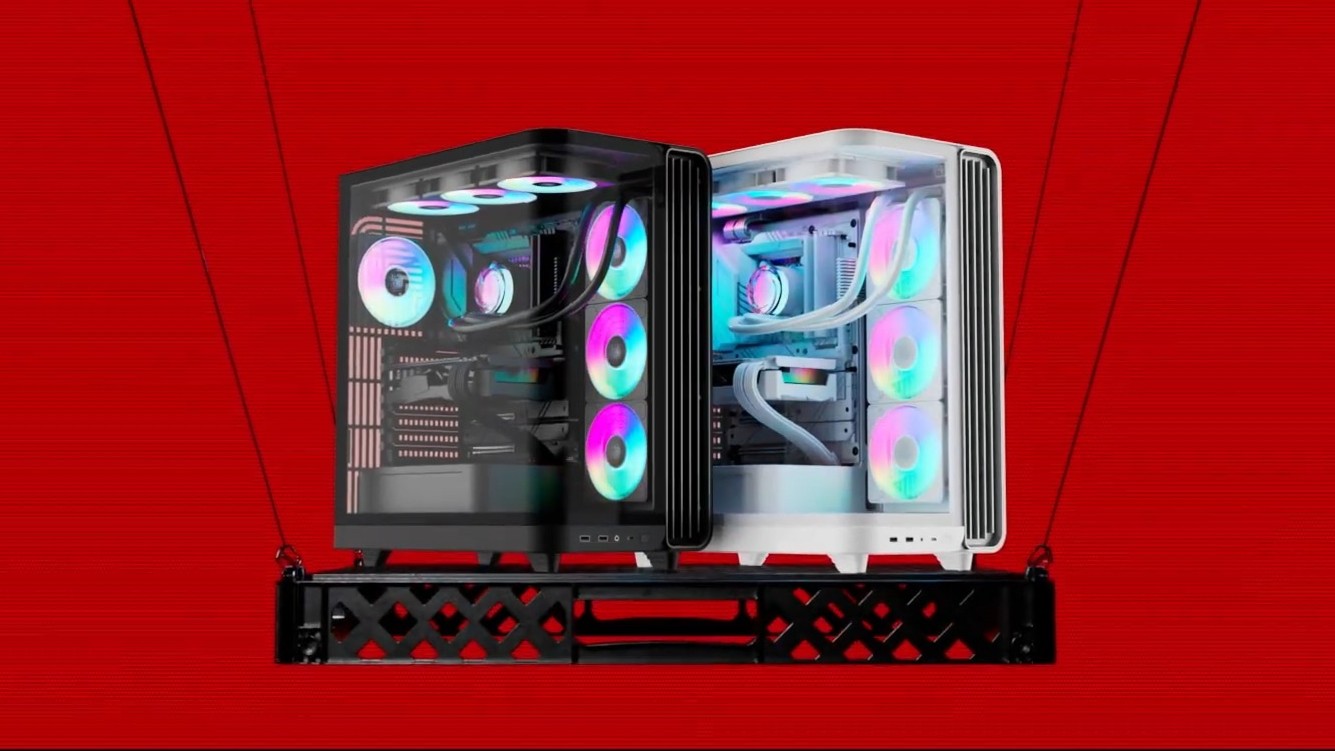MSI Claw vs Steam Deck: Which is the best gaming handheld?
MSI Claw will be the first PC gaming handheld to feature the new Intel Core Ultra processors.
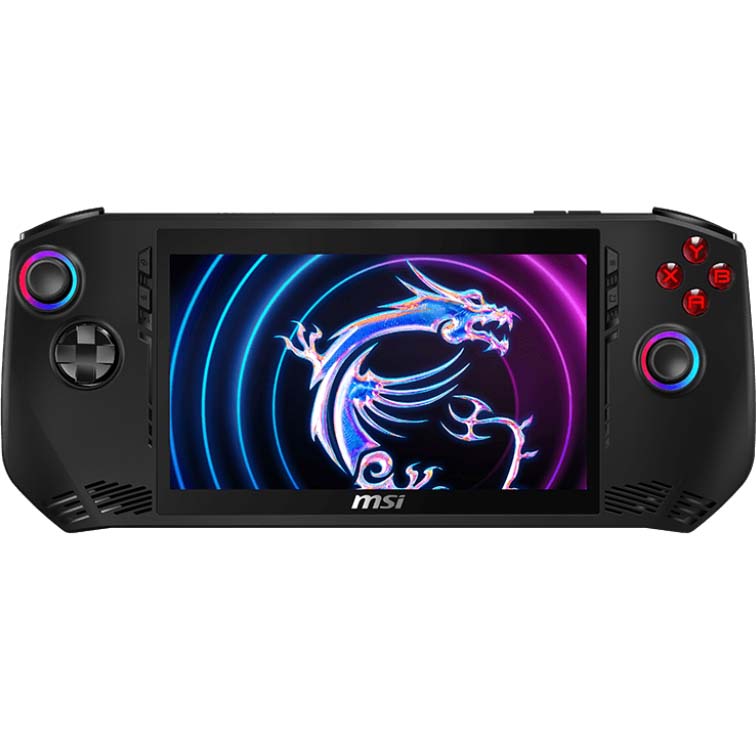
Boasting the brand new Intel Core Ultra processor with a built-in NPU, the MSI Claw is the latest and greatest handheld on the market. As such, it will likely provide excellent game performance. It's somewhat costly, but it is basically a small gaming laptop with controllers attached. With this device, you can access any services you would on a regular PC, surf the internet, and even work on non-gaming programs.
Pros
- Powerful Intel Core Ultra processor
- Good ergonomic grips
- Great 120Hz 7-inch display
- MSI Center seems clean and simple
Cons
- More expensive
- Comes with Windows 11 bloatware
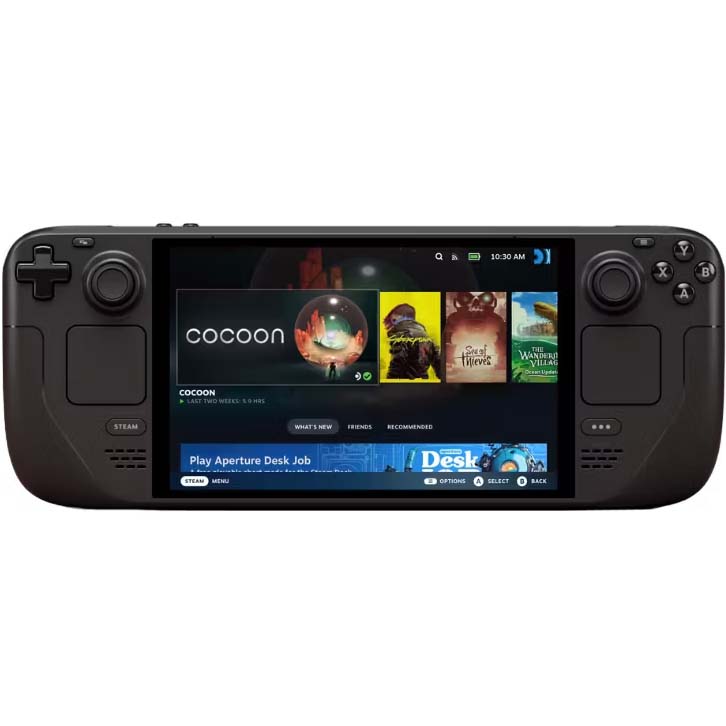
The Steam Deck is more affordable but is intended for a more narrow focus of simply playing compatible games from your Steam library. That being said, many people choose to customize the handheld and make it work with more services. The device is slightly heavier than the MSI Claw but offers haptic touchpads, which MSI's handheld does not.
Pros
- Haptic touchpads give more control
- Compatible with Steam games
- More affordable with three different price points
- Pricier OLED version also available
Cons
- Doesn't work with all games out of the box
- IPS glow
- Short battery life, as with all gaming handhelds
The Steam Deck has been out for a couple of years now, and since its launch, we've seen several PC gaming handheld challengers enter the market. As of January 2024, Micro-Star International (MSI) has thrown its cap into the ring with its brand-new MSI Claw. This new device features the latest and greatest processor technology compared to the older Steam Deck, but both are excellent handhelds. Of course, Valve also recently released an update to its handheld in the form of the more expensive Steam Deck OLED, so I'll keep this update in mind throughout the page.
So, is Steam Deck or MSI Claw better? That depends on what you intend to use the handheld for. Ultimately, one of these devices is more impressive than the other, but the other might suit your needs better.
MSI Claw vs Steam Deck: Specs
First, take a gander at the MSI Claw vs Steam Deck specs to get a feel for both handhelds' most significant differences. Once you're done perusing, we'll review what these specs mean for you as a consumer.
| Header Cell - Column 0 | MSI Claw | Steam Deck LCD / Steam Deck OLED |
|---|---|---|
| Price | $699 | $749 | $799 | $399 | $529 | $649 | (OLED - $549 | $649) |
| Release date | March 8, 2024 (US) | February 25, 2022 |
| Processor | Intel Core Ultra 5-135H | Intel Core Ultra 7-155H | Semi-custom AMD APU code-name "Aerith" (TSMC 7nm) |
| Storage | 512GB | 1TB SSD | 64GB eMMC | 256GB NVMe SSD | 512GB NVME SSD |
| Memory | 16GB LPDDR5-6400 | 16 GB LPDDR5 @ 5500 MT/s over 4x 32-bit memory channels = 88GB/s total bandwidth |
| OS | Windows 11 Home | Steam OS 3.0 |
| Display | 7-inch FHD (1920 x 1080) 120Hz IPS-Level touchscreen | 7-inch (1280 x 800) 16:10 IPS touchscreen, 400nits | (OLED - 7.4-inch HDR OLED, 1280 x 800 up to 1,000 nits) |
| Ports | 1x USB-C Thunderbolt 4 port with PD charging and 1x microSD card reader | 1x USB-C port, 1x headphone jack, 1x microSD card slot |
| Touchpad | None | Yes, two |
| Haptics | HD haptics | HD haptics, Gyro: 6-Axis IMU |
| Dimensions | 11.6 x 4.6 x 0.83 inches (294 x 117 x 21.2mm) | 11.73 x 4.6 x 1.93 inches (298 x 117 x 49 mm) |
| Weight | 1.5 lbs (675 grams) | 1.47 lbs (669 grams) |
| Battery life | Unknown (53Whr capacity) | 83 mins - 7 hours | (OLED 3 - 12 hours) |
MSI Claw vs Steam Deck: Price
Let's begin with the most significant issue — the price. Just a quick look at the MSI Claw vs Steam Deck specs will tell you that the Steam Deck and Steam Deck OLED are more affordable than the least expensive MSI Claw. In fact, compared to all of the best PC gaming handhelds on the market today, Steam Deck reigns as the inexpensive king.
Spending $399 gets you an LCD-screen Steam Deck with 64GB of storage and a carrying case. Meanwhile, you can up the price to $529 for 256GB or $649 for 512GB. While a bit more expensive, the Steam Deck OLED is still reasonably priced at $549 for 512GB of space or $649 for a 1TB SSD.
Jumping over to MSI Claw prices might make your wallet weep a little. The base Intel Core Ultra 5-135H version with a 512GB SSD costs $699. Then there's the middle-tier option for $749 which comes with an Intel Core Ultra 7-155H and a 512GB SSD. Lastly, the 1TB SSD version also with an Intel Core Ultra 7-155H has a $799 price point. Oof. But that all being said, you shouldn't choose a handheld based on its price alone. You must also consider what you want to do with the device and which will offer the best experience.
TL;DR PRICE WINNER: If you're on a budget and looking for a less expensive gaming device, then the Steam Deck is the handheld to go with. However, there is more than just cost to consider. You'll get more power and freedom from the MSI Claw, so if that's something you specifically want, then keep MSI's handheld in mind.
All the latest news, reviews, and guides for Windows and Xbox diehards.
MSI Claw vs Steam Deck: Performance and storage
Earlier this year, I was able to spend some time using the MSI Claw at CES 2024. I'll need to run more thorough tests on it when I get a review unit, but it seemed like a very impressive device.
When it comes to performance, the MSI Claw should have a good edge over the Steam Deck. This is due to the fact that the MSI Claw features Intel's new Meteor Lake chip also known as the Intel Core Ultra processor. Now, this chip isn't just a minimal yearly upgrade. No, the new Intel Core Ultra processors mark the biggest CPU shift in 40 years and should vastly help computers work more efficiently. So, MSI being the very first handheld to utilize one is a big deal. This likely means that the MSI Claw will be the most efficient handheld on the market with smooth performance and great graphics (for a handheld), especially with the use of Intel XeSS supersampling.
As it is, the Steam Deck and Steam Deck OLED were designed with affordability in mind. Valve's semi-custom AMD APU isn't super powerful, but the system was designed to operate smoothly while playing Steam games. As long as you aren't expecting the very best graphics from the Steam Deck, it will work well with any compatible games you run on it.
Steam Deck and MSI Claw are Storage-wise similar in that they offer 516GB and 1TB SSD versions. The Steam Decks' third 64GB version can also appeal to those on a serious budget. However, this is such little storage space that you'll likely need to make up for it with an SSD upgrade or a large microSD card, so it won't save much money. To get an idea about how internal SSD installation is done, you can look at our guide on how to install a WD_BLACK SSD upgrade into an ROG Ally.
TL;DR PERFORMANCE AND STORAGE WINNER: This is a split winner. Regarding performance, the MSI Claw's Meteor Lake chip will make it the more powerful gaming handheld between the two. Still, the Steam Deck is designed to perform well with the specs it has. Additionally, the Steam Deck and MSI Claw offer 512GB or 1TB storage SSD. For those who want to really save money, the Steam Deck offers a tiny 64GB SSD. But given how much space games can take up, you'll likely need to spend money on a large microSD card or SSD card to make this lower storage option worth using.
MSI Claw vs Steam Deck: Display
The MSI Claw and the original Steam Deck LCD offer 7-inch displays, while the Steam Deck OLED is slightly larger at 7.4 inches. However, the MSI Claw has a better resolution that reaches 1920 x 1080 to make game visuals come through more crisply. Meanwhile, the original Steam Deck LCD and Steam Deck OLED displays aren't horrible, but they aren't great with their 1280 x 800 resolution. The Steam Deck LCD also has some pretty bad IPS glow, which can make darker video game scenes look cloudy.
It's worth noting that OLEDs are currently considered the best displays on the market because of their amazing ability to display color vibrantly against true black pixels, which can be very helpful for playing video games. You can learn more about this in my OLED vs. QD-OLED vs. QLED vs. AMOLED vs. Mini LED display guide if you'd like. So, even though the Steam Deck OLED only has 1280 x 800 resolution, the OLED display makes imagery come through more clearly than with the LCD version.
That said, you don't need an OLED display to enjoy your games. From my time with the MSI Claw, the IPS touchscreen offered good coloring and contrast. Enough so I could play Assassin's Creed Mirage on it without issues. I was particularly keen on how smoothly games ran on the MSI Claw thanks to its offering up to a 120Hz refresh rate, higher than the Steam Deck OLED's 90Hz and the original Steam Deck's 60Hz.
So, if your handheld decision hinges on how good the screen is, you need to ask yourself if you value higher refresh rates or better color quality. A good rule of thumb is that if you tend to play more competitive games against others online, you will be better served with a higher refresh rate. But if you tend to play solo adventures, a screen with better color accuracy and contrast could be more appreciated.
TL;DR DISPLAY WINNER: We have yet another split. The Steam Deck OLED offers a beautiful 7-4-inch HDR display that shows off colors and contrast to an impressive degree at a 90Hz refresh rate. However, the MSI Claw's 7-inch IPS display supports up to 120Hz, and while it likely doesn't have as good color and contrast as the Steam Deck OLED, it still looks plenty good. So, it depends on whether you value picture quality or refresh rate more.
MSI Claw vs Steam Deck: Buttons, joysticks, and grip
I got to hold the MSI Claw for a while at CES 2024, and I was impressed by its ergonomic grips and balanced design. This put less pressure on my hands and fingers so I could hold it longer. So I was surprised when I learned that it weighed 1.5 pounds (a little more than the Steam Deck's 1.47 pounds) while being slimmer than Valve's handheld.
The Claw's buttons and offset joysticks felt good and responded well to my input. I was also happy to learn that it has Hall Effect triggers and joysticks, which should keep them from experiencing drift issues.
Now, I love my Steam Deck, but it is a chunky boi, and so is the Steam Deck OLED. My hands tend to get tired after lifting them toward my face for a certain amount of time due to their lack of ergonomic support.
I'm also not a massive fan of the Steam Deck joysticks being at the same height. However, haptic touchpads are one thing the Steam Deck has that the MSI Claw doesn't. These can be very useful for navigating game menus or aiming at enemies with more precise control. However, the Steam Deck does not have Hall Effect joysticks so that they can develop drift issues.
TL;DR BUTTONS, JOYSTICKS, AND GRIP WINNER: Despite MSI Claw weighing slightly more, it has better grips, which make it easier to hold overall. Meanwhile, the Steam Deck and Steam Deck OLED are thick handhelds that can put much pressure on people's hands and wrists. A significant tradeoff is that the Steam Deck offers excellent haptic touchpads, which can be helpful for quickly aiming or navigating game menus. However, MSI Claw has Hall Effect joysticks and triggers to prevent any drift issues from developing.
MSI Claw vs Steam Deck: Software, compatible games, interface, and operating system
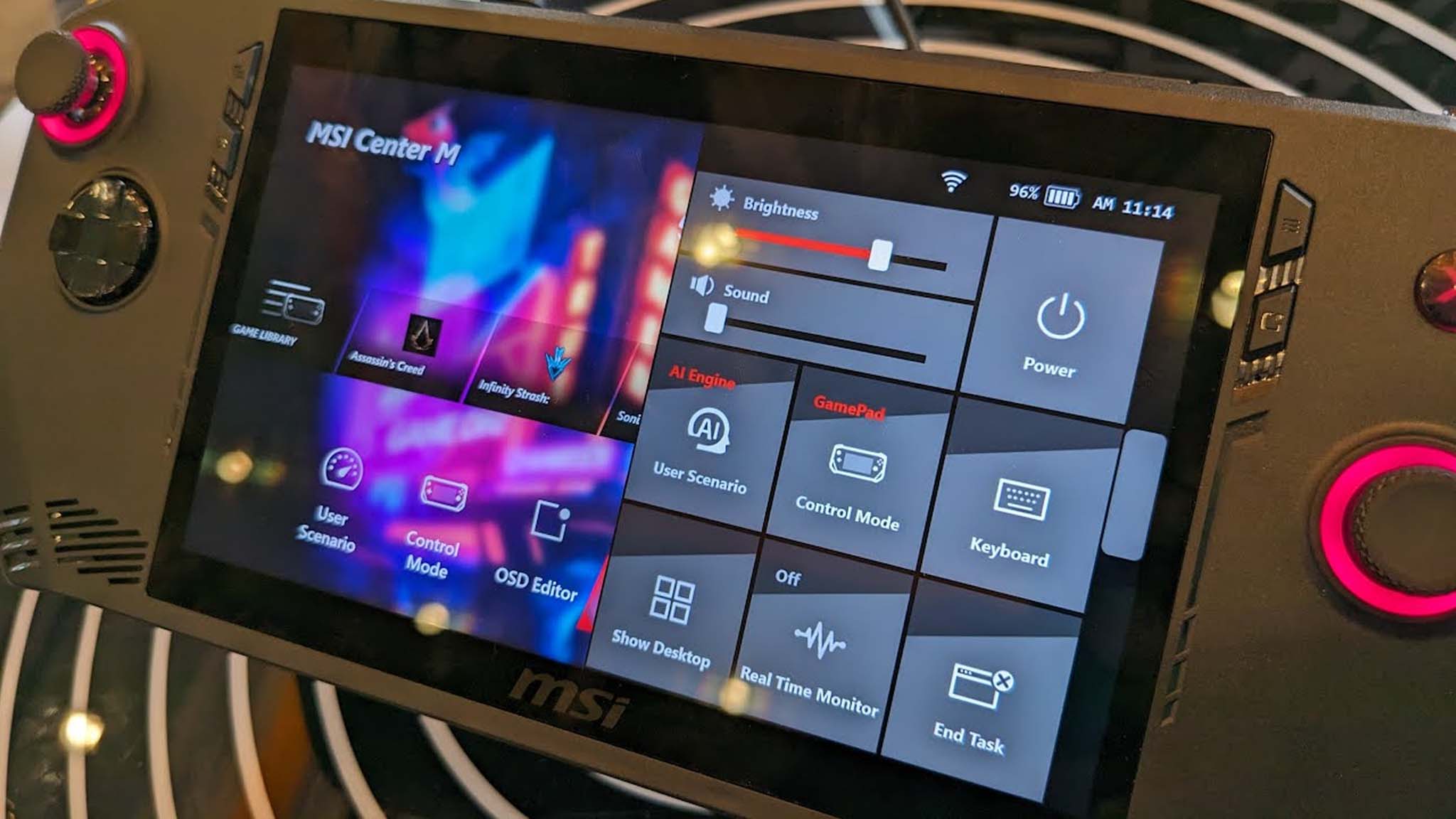
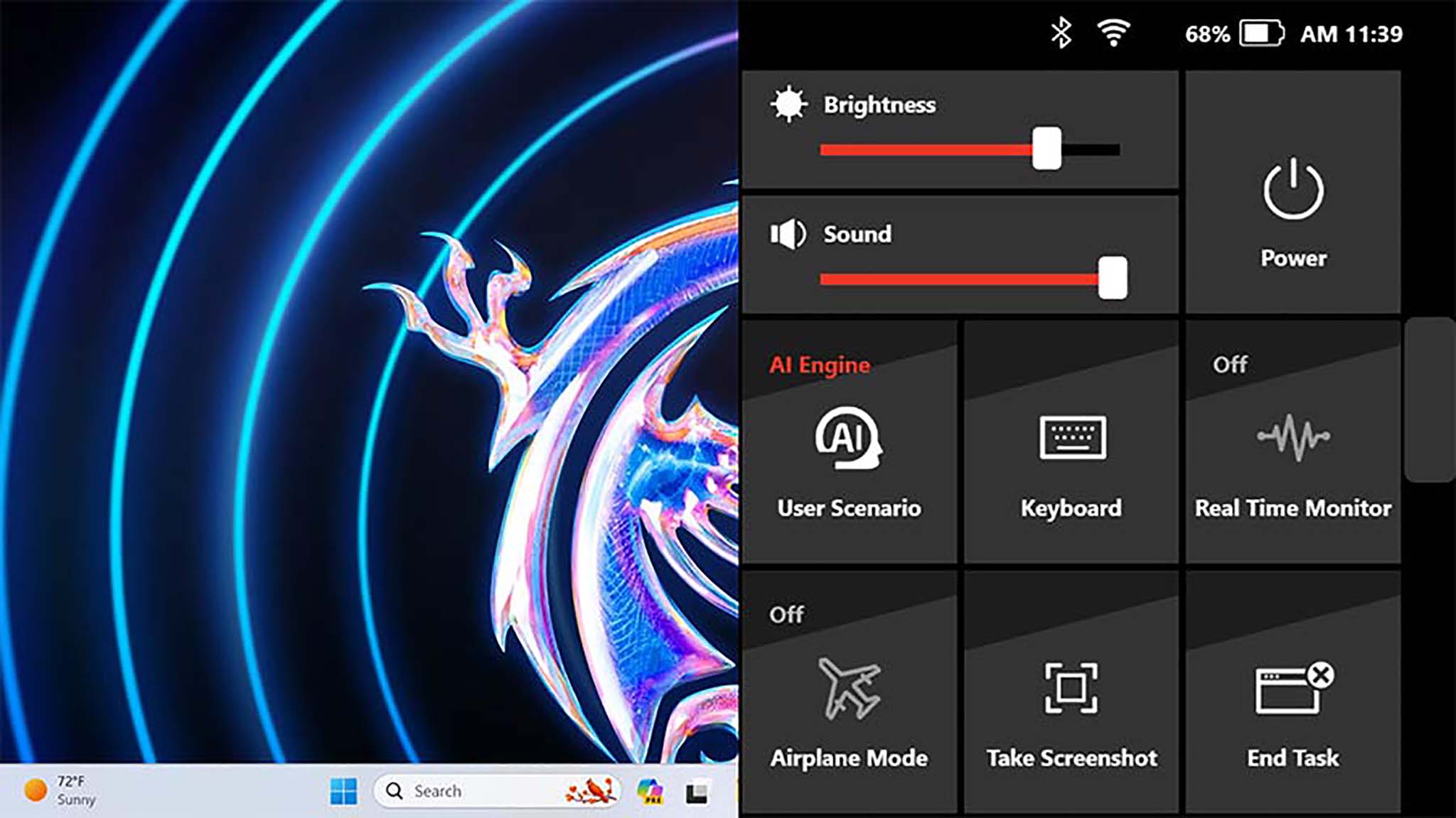
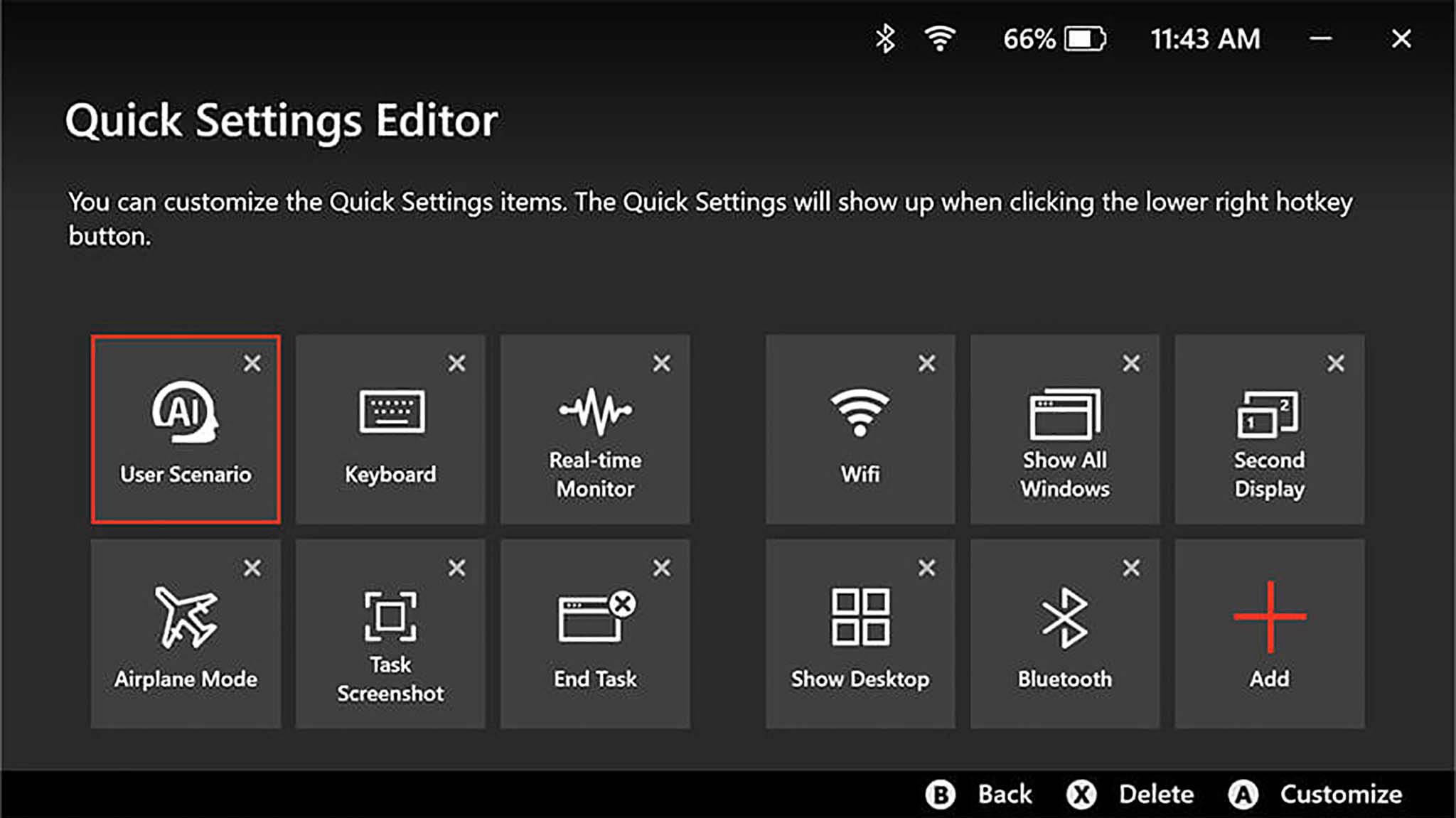


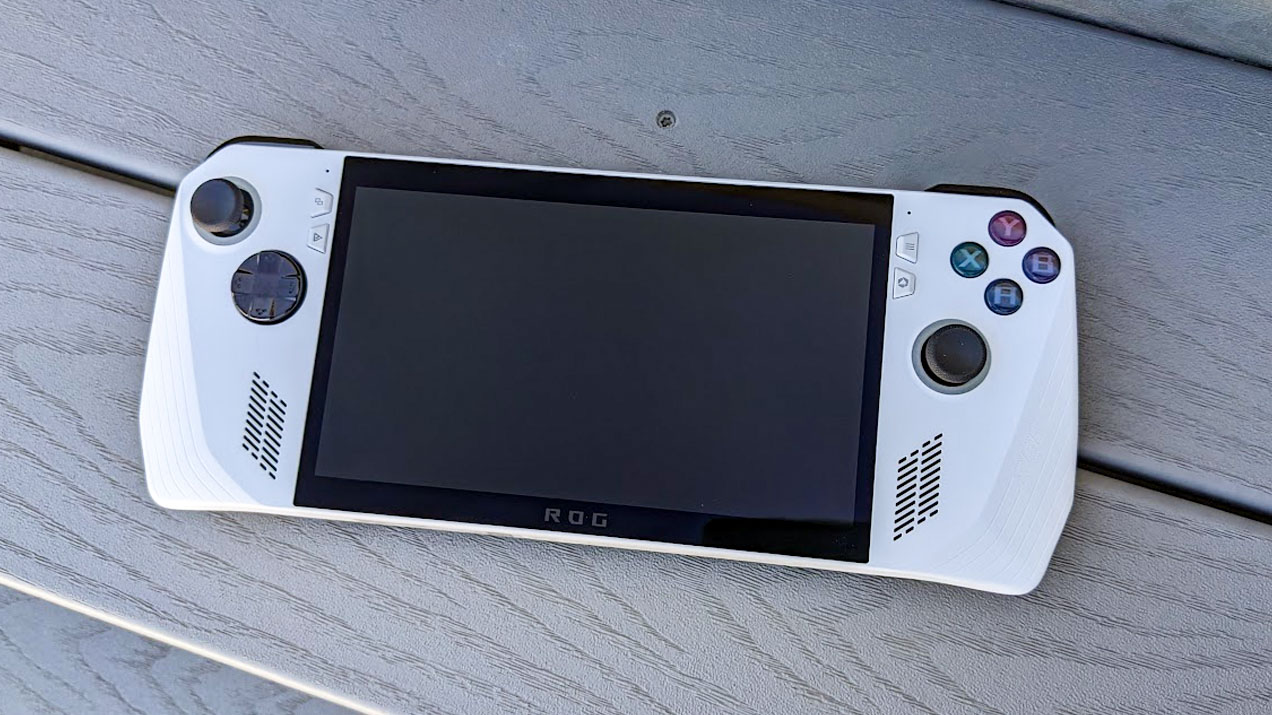
- Best Steam Deck games
- Best ROG Ally battery packs
- Best ROG Ally games and optimization
- Baldur's Gate 3 on Steam Deck
Regarding software, the most significant difference between the Steam Deck and MSI Claw is that the latter runs Windows 11 Home while Valve's creation runs SteamOS. In other words, the MSI is basically a small gaming laptop that can be used to play any gaming service or program that a regular PC can. This gives you more freedom as a player to access games outside of Steam. You could even use the MSI Claw to surf the web or run programs for work if you wanted to.
The downside of having a gaming handheld with Windows 11 is that you get all the bloatware of the operating system. So you'll want to take time to remove unnecessary programs and stop specific software from running at startup. Then, the handheld will run efficiently.
I need to spend more time with the MSI Claw before fully commenting on its MSI Classic M interface and game launcher. However, from my limited experience with it, it seemed clean, easy to interact with, and quick to respond. Once we get our own MSI review unit, I'll conduct some testing and see precisely what the interface is like.
Let's move on to something I'm well acquainted with. Steam Deck was explicitly designed to be a device that played Steam games. The interface is easy to work with and provides plenty of setting customization options to get the handheld working the way you want it to. You should know that you cannot play all Steam games on it right out of the box, though. Games must be Steam Deck Verified or at least compatible, or they'll refuse to run or have crashing issues.
As I've alluded to earlier, unlike the MSI Claw, the Steam Deck is not intended to be an all-purpose PC, so it might feel more limited when you first pull it out of the box. That said, some people customize the device by installing Windows on Steam Deck or doing other warranty-voiding things that allow them to use it more like a PC.
TL;DR SOFTWARE WINNER: Between the two, MSI Claw is immediately compatible with more games, programs, and services because it runs Windows 11 Home. Meanwhile, Steam Deck runs SteamOS and is specifically intended solely for running compatible Steam Deck games. Interface-wise, Steam Deck is very well designed and makes it easy to change settings, and from what I've seen of the Claw interface, MSI seems to have done an equally good job. We'll update this section after we do our own testing with the new device.
MSI Claw vs Steam Deck: Battery life
Since the MSI Claw hasn't been released yet, I haven't been able to conduct my own battery life testing on it. All we know is that the MSI Claw features a 53Whr battery, and MSI claims it "lasts 50% longer," but what it lasts longer against isn't specified. If it is like other PC gaming handhelds like the ROG Ally and Legion Go, it will likely last for roughly 1.5 to two hours on average. I'll update this section after I've completed testing on the MSI Claw.
Meanwhile, we have tested the battery life of the Steam Deck and Steam Deck OLED. The original Steam Deck LCD can last between 83 minutes to seven hours, depending on settings. When running heftier games like Cyberpunk 2077, you can expect to get between 1.5 to two hours out of it. As for the Steam Deck OLED, its screen allows it to last even longer, up to 12 hours on lowest settings and playing light games. However, when playing more intensive games the Steam Deck OLED can last up to three hours, which is an hour longer than the handheld average.
To be clear, a one-to-three-hour average isn't great. This means that many people are forced to end their gaming sessions early or else they have to play their devices while plugged in and charging. So if MSI has managed to create a gaming handheld that can last longer than the standard it will be a big deal.
TL;DR BATTERY WINNER: We can't fully commit to an answer on this subject until we get the MSI Claw in for testing. From our experience, the Steam Deck runs for an average of 83 minutes to seven hours, while the Steam Deck OLED can last up to 12 hours. MSI Claims its 53Whr battery "lasts 50% longer," but it's unclear what this is compared against. We'll update this section after conducting some MSI Claw battery testing.
MSI Claw vs Steam Deck: Which should I buy?
At the end of it all, we really have a bunch of tradeoffs that allow either handheld to be a good pick for someone. So, it would be best to determine what you want most from a gaming handheld.
Anyone looking for a more powerful on-the-go gaming device should go for the MSI Claw. This device looks sleek, feels great to hold, and should run games smoothly. In addition to being able to play any PC gaming service out there, this device is basically a gaming laptop with controllers attached. You can surf the web, run programs, do homework, and more.
Meanwhile, Steam Deck and Steam Deck OLED are excellent handhelds available at much more affordable prices. This is because they were explicitly designed to run games from your Steam Library rather than being full PCs. So, out of the box, they aren't meant to access other PC gaming services, nor are they intended for browsing the internet, but that doesn't stop people from customizing them so they can. While Steam Deck doesn't have nearly as powerful of hardware as the MSI Claw, Valve did an excellent job making a system that runs games smoothly on the lower hardware it uses.

This is the first PC gaming handheld to sport the powerful new Intel Core Ultra 7 processors with an AI-boosting NPU. It might be more expensive than the ROG Ally, but it will likely offer better performance. The seven-inch FHD IPS screen provides up to a 120Hz refresh rate, which promises to show games off beautifully.

Self-professed gaming geek Rebecca Spear is one of Windows Central's editors and reviewers with a focus on gaming handhelds, mini PCs, PC gaming, and laptops. When she isn't checking out the latest games on Xbox Game Pass, PC, ROG Ally, or Steam Deck; she can be found digital drawing with a Wacom tablet. She's written thousands of articles with everything from editorials, reviews, previews, features, previews, and hardware reviews over the last few years. If you need information about anything gaming-related, her articles can help you out. She also loves testing game accessories and any new tech on the market. You can follow her @rrspear on X (formerly Twitter).

